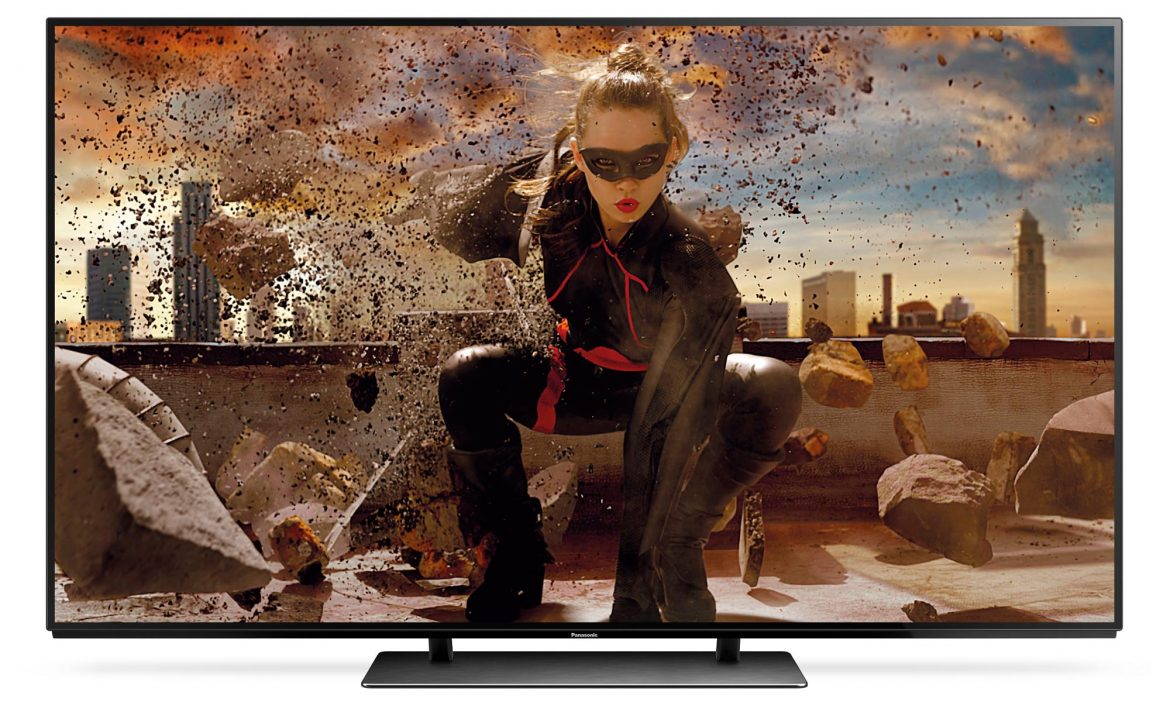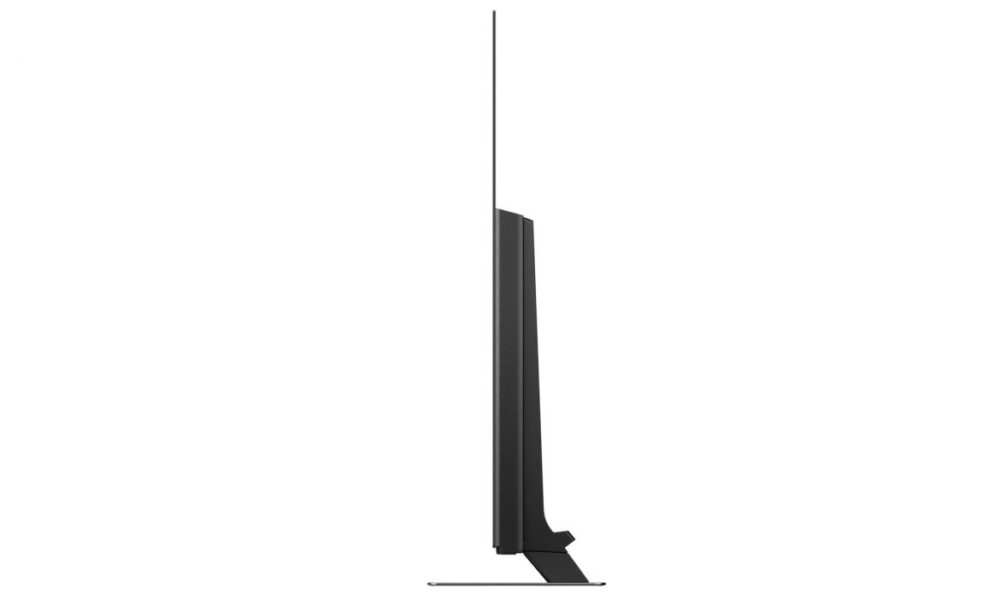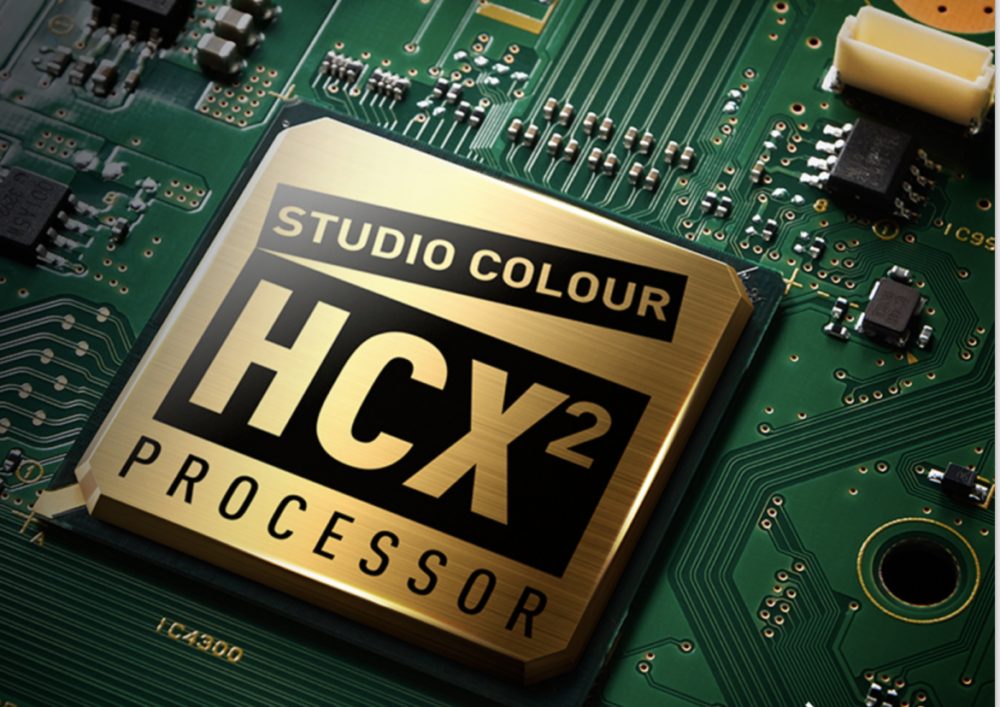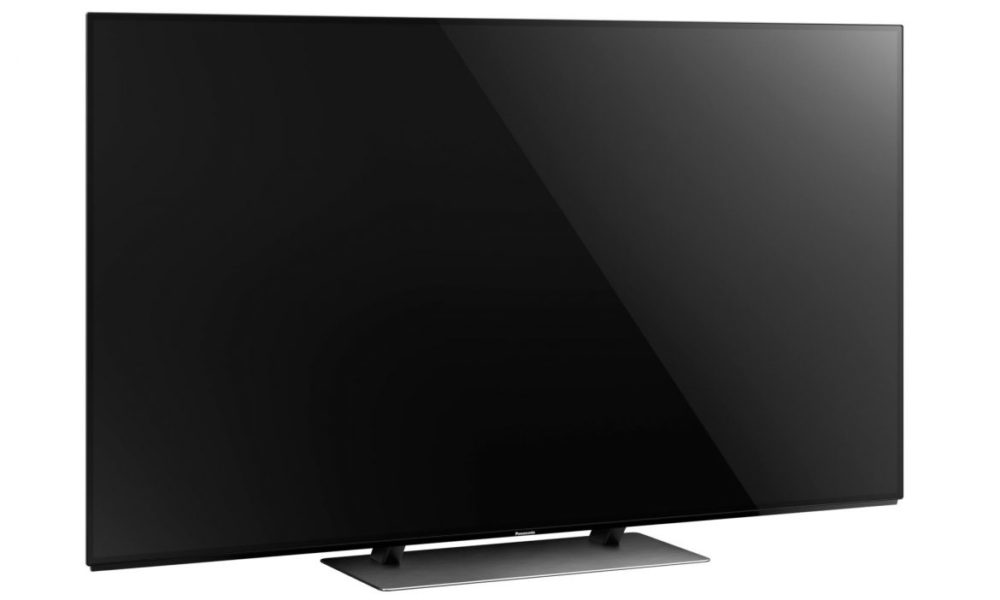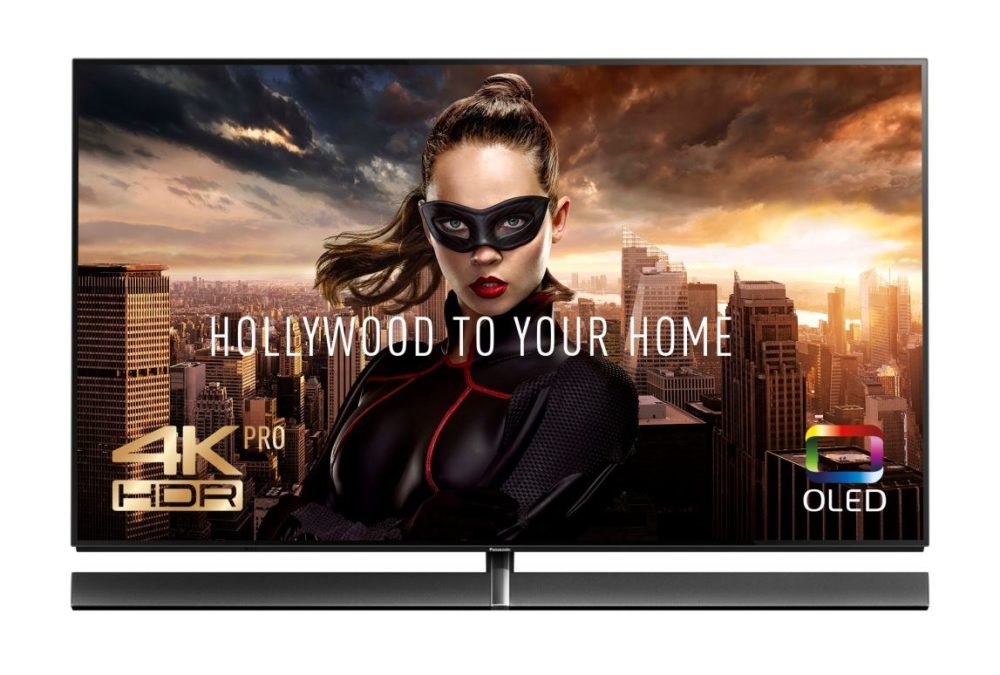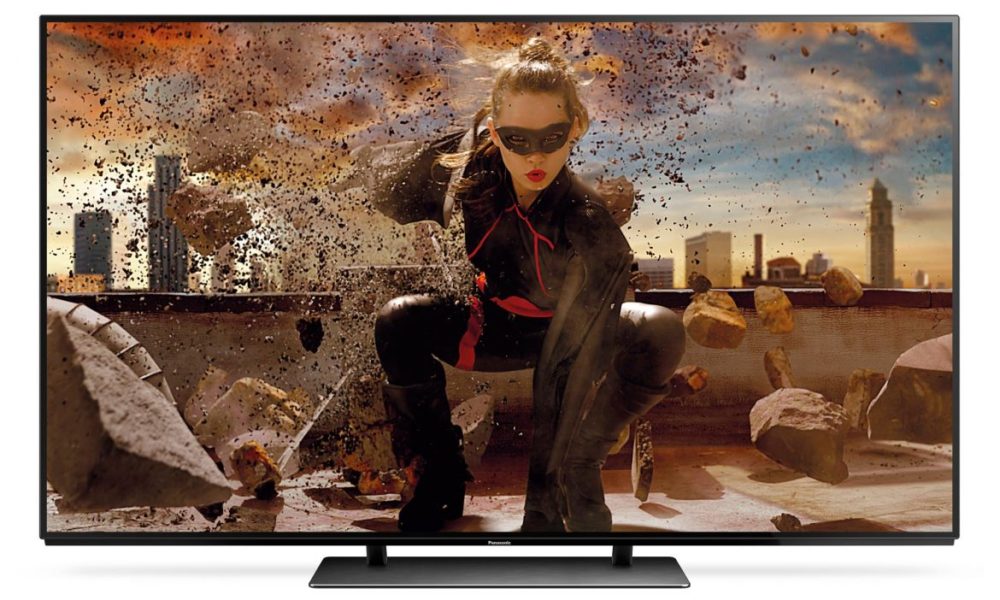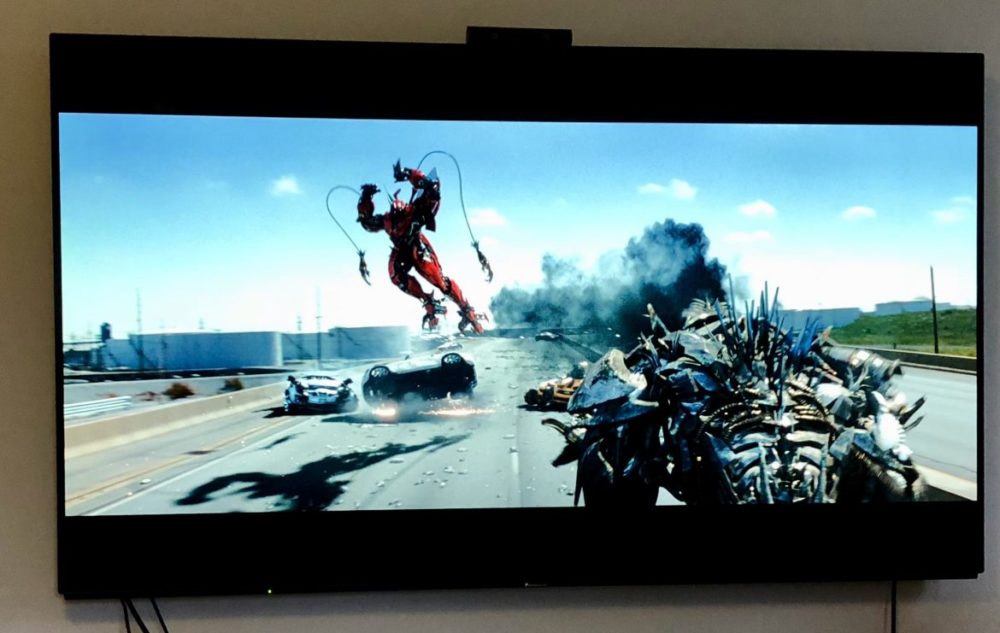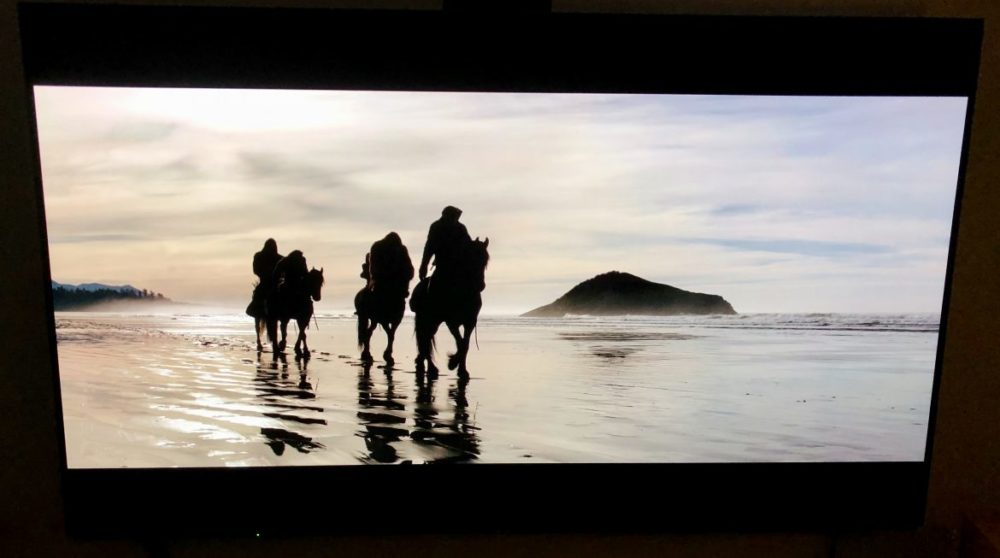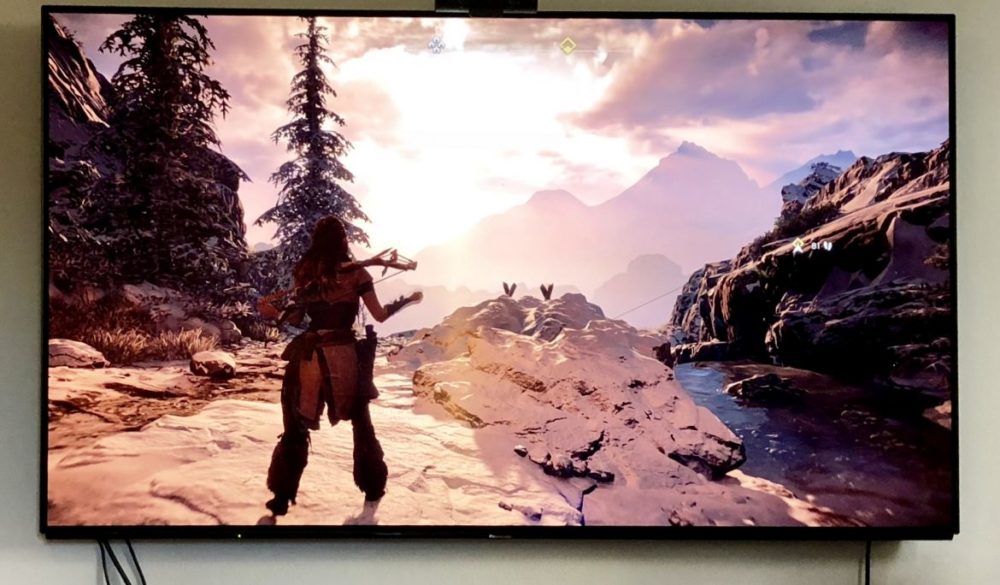TL;DR
Tired of sub-par picture quality? Panasonic's latest flagship, the EZ950 OLED TV, is here to redefine your viewing experience. It boasts unparalleled black levels and stunningly accurate colors, setting a new benchmark for 2017-2018. While the smart TV interface could be better and connections aren't the most convenient, the EZ950's picture performance is simply phenomenal, even for demanding gamers. It's a significant investment, but does it deliver the ultimate visual upgrade? Dive into our full review to find out if the EZ950 earns its place as the best TV of the year!
We at senses.se sometimes reflect nostalgically on the era of plasma TVs. While they presented challenges with their size, weight, power consumption, and relatively high cost per inch, their black levels and overall picture quality were unparalleled. LCD technology has made significant advancements since its initial, tentative steps towards delivering energy-efficient, high-quality imagery. From the somewhat lackluster efforts around 2005, we’ve witnessed the emergence of impressive performance. We particularly appreciated the progress Panasonic achieved with the LCD-based Panasonic Viera TX-65DX900E last year. However, this year, their focus has shifted entirely in the high-end segment to OLED technology.
Unlike LCD, OLED technology enables individual pixel control and eliminates the need for backlighting, allowing for true black levels where pixels are completely turned off. With approximately eight million pixels on a 4K screen, achieving top-tier performance remains a costly endeavor. The key question is whether a significant upgrade is truly warranted. senses.se has spent the past month evaluating Panasonic’s 2017 flagship model, the Panasonic EZ950, to determine if it genuinely earns the title of the best TV of 2017-2018.
Panasonic EZ950 – The Look
The EZ950 refines the design introduced with the DX900, although the two models appear similar at first glance, at least from the front. The bezel surrounding the screen has been further reduced, creating the impression of a larger display, despite retaining the 65″ size. The upper portion of the TV is remarkably thin, while the lower half houses the electronic components responsible for panel control and system operations.
The remote controls are identical to previous models, a welcome consistency, as we appreciate the stylish design and clear layout of the silver main remote, which also includes backlighting. While the smaller, touch- and voice-based remote is also included, its utility remains questionable for many users. However, this inclusion aligns with industry standards for top-tier models, providing options for those who prefer this control method.

The included remote controls. One offers a stylish and well-considered design, while the other provides touch and voice control.
The overall weight of the EZ950 is slightly less than that of the DX900, likely due to the slim design and ongoing advancements in panel technology. The OLED panel is manufactured by LG Displays (distinct from LG Electronics, a competitor in the TV market). The ultimate picture quality, however, is determined by each manufacturer’s proprietary chips and processors for image processing. Panasonic’s primary chip, the Studio Color HCX2 (HCX stands for “Hollywood Experience”), represents an evolution of last year’s HCX processor. This chip, combined with the 2017 OLED panel, contributes to the exceptional picture quality, particularly in black levels and color reproduction. Notably, the Panasonic EZ950 and EZ1000 are currently the only 2017 models certified by both THX and the Ultra HD Alliance.
The primary distinctions between Panasonic’s two top models for 2017, the EZ1000 and EZ950, lie in the inclusion of a Technics soundbar and an anti-reflective filter on the panel in the EZ1000. The core panel technology remains the same. Beyond these features and additional professional picture settings tailored for color grading professionals, the picture quality is essentially identical between the two models. The value of the approximately SEK 12,000 price difference is a matter of personal preference. We suggest that users consider foregoing the upgrade, optimizing the viewing environment by minimizing ambient light, and investing in a separate home theater system or soundbar to achieve comparable results with leftover funds.
The EZ950 features a more refined and stable stand compared to the DX900, accommodating placement on most standard TV stands. For those preferring wall mounting, the TV is compatible with any high-quality 400×400 VESA mount.
Connectivity options mirror last year’s configuration, including four HDMI inputs, all supporting HDMI 2.0a and HDCP 2.2, with one featuring ARC for transmitting TV audio to an amplifier. Notably, only HDMI ports 1 and 2 offer full bandwidth (HDMI 2.0b) for 4K at 50/60Hz and Chroma 4:4:4; prioritize these for optimal performance. The arrangement of connections warrants improvement, as their placement deep within the side or, worse, on the back of the TV, makes access challenging, particularly when wall-mounted. A more accessible edge placement or a media box solution similar to those employed by Pioneer and Samsung would be beneficial. While media boxes offer convenient connectivity, they introduce an additional component that can potentially introduce signal degradation or interference.
Panasonic continues to utilize Mozilla’s FirefoxOS-based platform, now branded as My Home Screen 2.0, for its smart TV functionality. The platform’s limitations and outdated nature, including incomplete app support, make it a less-than-ideal choice. However, given the prevalence of external smart TV solutions such as Apple TV and Roku, this may not be a critical drawback for many users. Panasonic may consider adopting Android TV for future iterations. One notable advantage of the current operating system is its accurate HDR display within the built-in YouTube app, due to VP9-2 support, a feature lacking in some recent 4K media boxes from other manufacturers.
Panasonic EZ950 – The Picture
We can state unequivocally that the Panasonic EZ950 delivers exceptional picture quality. While the DX900 was remarkably impressive, the EZ950 represents a noticeable improvement. In fact, it exhibited the most color and light accurate picture we measured this year, surpassing the top models from Samsung, LG, and Sony. While meticulous calibration could further enhance the DX900’s picture, even with its THX mode closely aligned with reference values, achieving superior color and luminance required extensive fine-tuning. The EZ950’s THX mode, in contrast, closely matches measured values, simplifying the user experience: selecting “THX” for a dimly lit room or “THX Bright Room” for daylight viewing delivers accurate and optimized picture quality. This is the hallmark of a top-tier TV: effortless setup allowing users to immediately enjoy their favorite movies and games.
This marks Panasonic’s second foray into the OLED market, following the CZ950 in 2015. OLED technology (specifically AMOLED with self-illuminating pixels, as used in this case – similar to the iPhone X) offers the advantage of individually controlled, self-luminous pixels without the need for backlighting. This results in unparalleled black levels (comparable only to plasma) and more natural color reproduction. Unlike plasma, which no longer meets EU energy consumption requirements, modern OLED is significantly more energy-efficient, achieving a B energy class rating. However, like plasma, OLED is susceptible to burn-in, which is mitigated by built-in protection mechanisms like pixel shifting and periodic automatic maintenance. As a general precaution, avoid displaying static images for extended periods; employ a screensaver or switch to a channel with moving content when pausing video games, for instance.
In addition to supporting 4K resolution (3840×2160 pixels), this model supports both HDR10 (the dominant open standard) and the less prevalent HLG (hybrid log-gamma, a royalty-free broadcast technology developed by the BBC and NHK). At the TV’s launch in early 2017, the third HDR standard, Dolby Vision, was not widely adopted. However, its presence has grown recently, with significant support from Apple in their new Apple TV 4K. The EZ950 does not support Dolby Vision, and likely will not through future updates, as it necessitates specific hardware and licensing. This is a drawback, as the format possesses the theoretical potential to become the superior HDR standard, due to its dynamic metadata for color and light on a per-frame basis. Nevertheless, HDR10 remains the most crucial feature, as it is the clearly dominant standard at present. (This article provides further details on 4K and HDR).
HDR enhances the contrast between light and dark and improves color reproduction. Its effectiveness depends on the source material’s quality and the display’s dynamic range. A greater difference between the darkest and brightest points yields a more impactful HDR experience. LCDs have traditionally excelled in brightness, but have struggled with achieving deep blacks. The DX900 partially addressed this with localized dimming. The EZ950 doubles the brightness of the CZ950, peaking at approximately 800 nits, a respectable figure for HDR, though less visually striking than the DX900’s nearly 1,200 nits. While the EZ950’s bright highlights may be less pronounced than those of last year’s top model, it’s important to consider that contrast is best achieved through polarization. The DX900 reaches higher brightness levels but cannot achieve the same level of darkness. For instance, a starry sky might appear grayer with brighter stars on the DX900, whereas the EZ950 accurately depicts a pitch-black sky with distinct points of light, closely resembling reality. This highlights the choice between exaggerated settings and settings that offer a more natural and detailed picture.
Numerous software settings are available for picture enhancement, including Intelligent Frame Creation (IFC), which can improve smoothness without introducing the “Soap Opera Effect,” and BFI (Black Frame Insertion), which inserts black frames for smoother motion in 24fps content. However, these artificial enhancements can distort the film image. We generally recommend disabling such features for the most accurate picture, which is automatically done in THX modes. Panasonic deserves credit for providing flexible options for users who wish to experiment.
2017 also marks the apparent end of 3D technology for home use. While Panasonic supported 3D since its Blu-ray popularity, adoption has steadily declined. The EZ950 omits 3D support, a feature that will not be missed by many.
Panasonic EZ950 – Input-lag
For gamers, input lag is a critical factor in TV selection. Excessive input lag introduces a noticeable delay, impairing gameplay. While less crucial for movies and TV, it can render games unplayable. An input lag below 37 milliseconds (ms) is generally considered acceptable, except for e-sports professionals who typically use dedicated gaming monitors. Some reports have indicated that the Panasonic EZ950 suffered from excessive input lag, ranging from 40-110 ms. However, we can confirm that a software update released a few months ago has reduced input lag in Game Mode to just under 26 ms across all modes (1080p, 4K, SDR, HDR), as measured with a Leo Bodnar device. This impressive performance for an OLED TV surpasses expectations. While disabling Game Mode improves picture quality slightly, providing better sharpness and black levels due to Chroma 4:4:4 and an input lag of approximately 37 ms, the compromise is marginal.
Panasonic EZ950 – Film and Games
Beyond specifications and theoretical performance, the real-world viewing experience is paramount. The EZ950 delivers exceptional results. To thoroughly evaluate its capabilities, we utilized reference-quality Ultra HD Blu-ray discs from 20th Century Fox, including the acclaimed Planet Earth II, and demanding 4K HDR games on the Playstation 4 Pro and Xbox One X.
The EZ950 distinguishes itself with its remarkably natural picture quality. Natural may seem unremarkable, but consider how rarely a TV accurately depicts a sun resembling a real-world sun, or grass that mimics the color and texture of natural grass. We began with Transformers: Dark of The Moon (UHD), the third and arguably best film in the Transformers series. This visually intensive film showcases the home theater’s capabilities, delivering powerful Dolby Atmos audio and detailed depictions of large-scale destruction. The film’s predominantly daytime setting allows for excellent HDR handling and well-integrated live-action and special effects. The UHD master and Panasonic EZ950 strike a balance between realistic skin tones and vibrant robot colors, with the Sentinel villain exhibiting particularly striking hues.
Forza Motorsport 7 on Xbox One X offers a stunning visual experience with 4K resolution, a smooth 60 fps refresh rate, and HDR. While often overused, the term “photorealism” accurately describes the game’s visuals. The paint on the cars convincingly reflects sunlight and other vehicles, and the EZ950 effectively renders dramatic skies with the sun breaking through clouds and raindrops hitting the camera lens with exceptional clarity.
The Apes Planet reboot Rise of The Planet of The Apes was excellent, though the second film, Dawn of the Planet of The Apes, was somewhat weaker. The third film, War of The Planet of The Apes, is a worthwhile conclusion to the trilogy and a great UHD edition. The film is rich in detail, with realistic textures on clothing and convincingly rendered hair on the apes’ bodies. The EZ950 captures the film’s dystopian atmosphere with accurate coloring, excellent light, and deep black levels without artifacts.
Super Mario Odyssey, despite not being in 4K or HDR, still benefits from the Panasonic EZ950’s color palette and lighting effects. The panel’s sharpness occasionally reveals the game’s 720p resolution, but the game’s artistry and beautiful environments, from Seaside Kingdom to Ruined Kingdom, are captivating.
Transformers: The Last Knight (UHD) is a weak film (with the exception of Anthony Hopkins) with a clumsy script and excessive length. However, it serves as a reference-quality UHD release, featuring Dolby Atmos sound, IMAX picture sections, and Dolby Vision HDR (which the EZ950 does not support). Despite being mastered from a 2K copy, it is exceptionally detailed in 4K, capturing details from sweat on actors’ faces to impressive special effects. The depth of field is also impressive, creating a near-3D experience. The HDR10 color and lighting are warmer than usual, and we are curious how the film would appear in Dolby Vision.
Tranformers: The Last Knight – lousy film, but a UHD edition you will want to show off sound and picture with.The visually stunning Horizon: Zero Dawn on PS4 Pro, while not reproducible in HDR on a standard picture, is one of the most beautiful games of 2017. The EZ950 allows for close examination of the detail, realistic colors, and excellent lighting. The panel’s black levels create good contrast in nighttime scenes, though the sun’s brightness is less intense than on the DX900.
BBC’s Planet Earth, released over a decade ago, demonstrated the compelling drama of nature’s spectacle, captured by talented nature photographers and narrated by David Attenborough. The sequel, Planet Earth II, delivers an almost spiritual experience in 4K and HDR. The world’s most beautiful natural locations, filmed across 40 countries and 2,100 recording days, are captured in magnificent detail and vibrant colors. The clarity and sharpness nearly surpass reality. This is the definitive disc for showcasing HDR, as the production relied primarily on natural light and darkness.
Verdict – Panasonic EZ950
As seasoned technology enthusiasts with decades of experience, we have evaluated a wide range of high-quality displays. The competition is intense. South Korean manufacturers, such as Samsung and LG, offer wider availability and more affordable options, with LG supporting all three HDR standards. However, in direct comparisons, Panasonic’s EZ950 stands out. The Sony A1 comes close, but the EZ950 prevails. The 65″ model requires a significant investment of approximately SEK 35-48,000. However, the EZ950 delivers exceptional value. It is the new reference TV for senses.se and, in our opinion, the best TV of 2017-2018. Equally impressive for gaming and film viewing (with a good digital HD signal), the Panasonic EZ950’s only shortcomings are the lack of Dolby Vision HDR and less accessible connections. Otherwise, it offers a picture quality that approaches perfection.
https://www.youtube.com/watch?v=1UtrPERUsZQ
